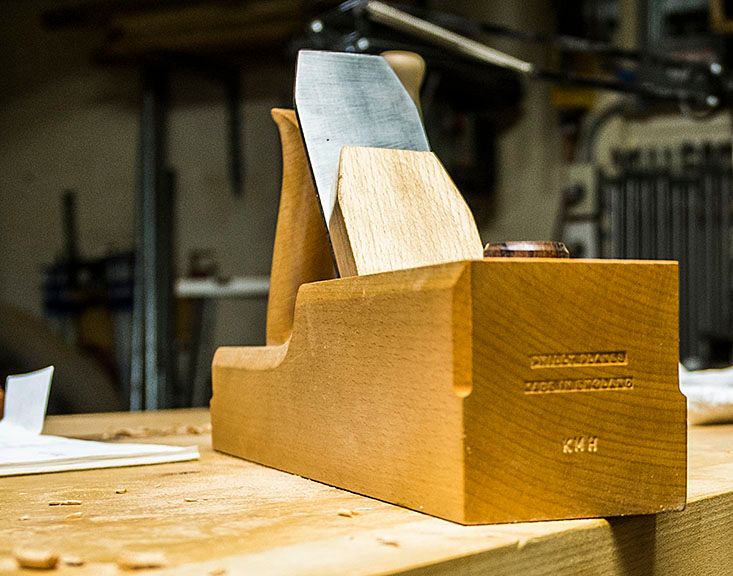This thread is in response to a brief discussion I had with Oskar Sedell in another thread. This is very inside baseball, but it may be interesting to the few people who enjoy traditional woodie minutiae.
The gouge cuts I'm referring to are at the front and back of the plane, and their purpose is to terminate the stopped chamfers that run vertically along the edges, normally about half way down.
Due to the influence of Larry Williams, the style one sees most often on contemporary planes is a gouge cut that leaves a small step at the bottom of the chamfer. This is from one of my planes:
IMG_2106.JPG
However, there are many other possibilities. A lot of 19th C. planes omitted the step in favor of a smooth transition (image courtesy of Oliver Sparks):
Screen Shot 2016-05-17 at 11.06.18 PM.jpg
Here's an example from the Canadian planemaker Daryl Gent. It's similar to mine, but slightly more stylized, with a tiny bit of undercut.
Screen Shot 2016-05-17 at 10.58.43 PM.jpg
One can take the undercut idea farther, so the gouge cuts are actually deeper than the stopped chamfers. Her'es an example from Oliver Sparks:
Screen Shot 2016-05-17 at 11.02.35 PM.jpg
Some 18th C. molding planes have double gouge cuts. Here's an example, courtesy of Richard Arnold:
Screen Shot 2016-05-17 at 11.00.21 PM.jpg
And finally, here's the most extreme example I've seen. I'm in total awe of this 18th C. maker's skill. You need sharp tools for this one! (this image also from Richard Arnold).
Screen Shot 2016-05-17 at 10.59.57 PM.jpg





 Reply With Quote
Reply With Quote







